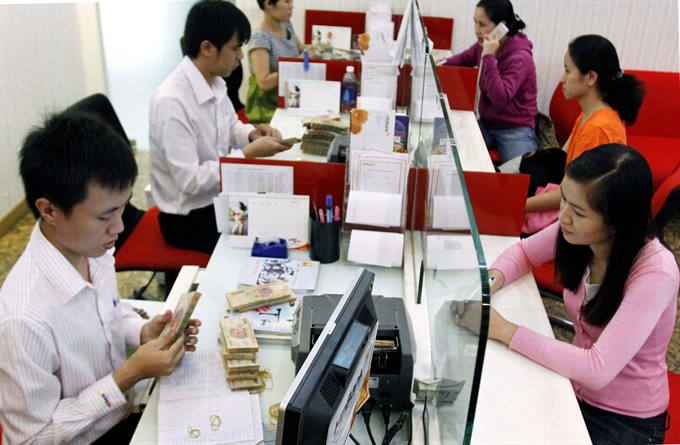 Economy
Economy

Total assets of Việt Nam’s banking system reached more than VNĐ9.25 quadrillion (US$407.5 billion) by the end of August, an increase of 8.79 per cent over the beginning of this year, statistics from the State Bank of Việt Nam (SBV) show.
 |
| Clients and members of staff at HDBank headquarters in HCM City. — VNA/VNS Photo Hoàng Hải |
HÀ NỘI — Total assets of Việt Nam’s banking system reached more than VNĐ9.25 quadrillion (US$407.5 billion) by the end of August, an increase of 8.79 per cent over the beginning of this year, statistics from the State Bank of Việt Nam (SBV) show.
Assets of seven State-owned banks rose 8.69 per cent to nearly VNĐ4.2 quadrillion, accounting for 45.4 per cent of the total number. State-owned banks where the State holds the majority stake include Agribank, Vietcombank, Vietinbank, Bank for Investment and Development of Việt Nam (BIDV), Việt Nam Construction Bank, GPBank and Ocean Bank.
Meanwhile, assets of joint-stock commercial banks stood at more than VNĐ3.72 quadrillion, up 8.75 per cent.
Total assets of finance and financial leasing companies were a little more than VNĐ134 trillion ending August, but this group witnessed the strongest asset growth of more than 17.2 per cent.
Only Co-operative Bank of Việt Nam saw its assets fall by 1.36 per cent.
Ending August, total charter capital of the whole banking sector hit VNĐ505.3 trillion, up 3.45 per cent compared to the start of the year.
Finance and financial leasing firms, and joint-venture and foreign banks had the strongest capital expansion of 8.3 per cent and 7.7 per cent, respectively.
Joint-stock commercial banks raised charter capital by 2.9 per cent during the period, reaching more than VNĐ206.6 trillion, while the State-owned banks’ capital increased by just 0.8 per cent, valued at VNĐ147.7 trillion.
Equity capital of joint stock commercial banks (VNĐ267.7 trillion) was also higher than that of State-owned banks (VNĐ246.2 trillion).
Ending August, the average capital adequacy ratio (CAR) of the whole system was 12.37 per cent, much higher than the 9 per cent rate allowed by the central bank.
However, CAR of the State-owned bank group remained below 10 per cent, standing at 9.69 per cent, while the similar number of the joint-stock commercial banks was 11.12 per cent.
Joint-venture and foreign banks have the highest CAR of more than 32 per cent, followed by finance and financial leasing companies of 18.3 per cent.
CAR is expressed as a percentage of the bank’s capital to its risk-weighted assets and is one of the main metrics used to promote the stability and efficiency of financial systems.
However, bank experts warn that when BASEL II norms are applied, bank CAR may decline by 2-3 percentage points due to an increase in the amount of their risky assets. BASEL II also requires banks to maintain CAR of at least 8 per cent.
Following the SBV’s roadmap, about 12-15 Vietnamese banks must apply BASEL II by 2020, but 10 banks, including three State-owned banks (Vietcombank, Vietinbank and BIDV), participated in an earlier pilot programme that started in September.
Moody’s Investors Service on Tuesday upgraded its outlook for Việt Nam’s banking system to positive for the next 12-18 months from stable, reflecting the country’s strong economic prospects and the positive outlook for most rated banks. — VNS




